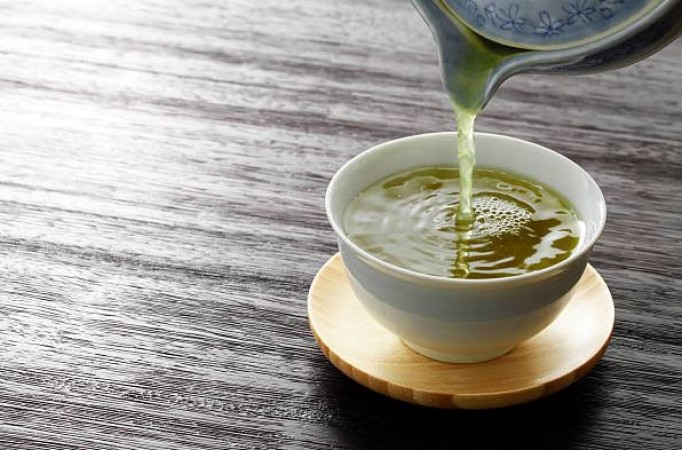
Tea has a rich history that spans thousands of years and is deeply rooted in various cultures around the world. It originated in ancient China and gradually spread to other parts of Asia and beyond. Here is a brief overview of the history of tea and some of its popular types:
History of Tea:
Ancient Origins: The origins of tea can be traced back to ancient China, where it was first consumed as a medicinal beverage. According to legend, the Chinese Emperor Shen Nong discovered tea around 2737 BCE when tea leaves fell into his boiling water. Tea was initially used for its medicinal properties and later became a popular beverage.
Spread to Japan: Tea cultivation and consumption spread to Japan in the 9th century CE, where they became an integral part of Japanese culture. Japanese tea ceremonies, particularly the formalized matcha tea ceremony, have a deep cultural significance.
Arrival in Europe: Tea was introduced to Europe in the 16th century through Portuguese and Dutch traders. It gained popularity among the aristocracy and eventually became a staple in British culture, leading to the establishment of tea plantations in British colonies.
Global Popularity: In the 19th century, tea became a global commodity, with large-scale cultivation and trade taking place in countries like India, Sri Lanka (formerly Ceylon), and Kenya. Today, tea is one of the most widely consumed beverages worldwide.
Sencha is a popular Japanese green tea with a delicate, slightly astringent taste. It has a bright green color and is often enjoyed as a daily beverage.
Matcha is a finely ground powdered green tea used in traditional Japanese tea ceremonies. Matcha has a vibrant green color, a rich umami flavor, and a creamy texture.
Gunpowder: Originally from China, gunpowder tea consists of tightly rolled green tea leaves, resembling pellets. It has a slightly smoky and strong flavor.
Black Tea: Black tea is fully oxidized, resulting in a dark color and robust flavor. The oxidation process develops the tea's characteristic malty, earthy, or fruity notes.
Assam: Grown in the Assam region of India, Assam tea is known for its strong, full-bodied flavor, deep amber color, and malty undertones. It's often used in breakfast blends.
Darjeeling: From the Darjeeling region in India, this tea has a light, floral flavor with muscatel grape notes. Often referred to as the "Champagne of Teas," it comes in different flushes, each with its own unique flavor profile.
Earl Grey: Earl Grey is a black tea infused with bergamot oil, giving it a distinctive citrusy aroma and flavor. It is a popular choice for tea blends and is often enjoyed with milk.
English Breakfast: A classic black tea blend typically consisting of Assam, Ceylon, and Kenyan teas It has a robust flavor and is often enjoyed with milk and sugar.
Oolong Tea: Oolong tea is partially oxidized, resulting in a wide range of flavors and aromas, from light and floral to rich and toasty.
Tie Guan Yin: A famous Chinese oolong tea, Tie Guan Yin has a floral aroma and a sweet, creamy taste. It is often steeped multiple times to enjoy its evolving flavors.
Da Hong Pao: Known as "Big Red Robe," Da Hong Pao is a highly prized oolong tea from China. It has a rich, roasted flavor with hints of chocolate and a long-lasting aftertaste.
White Tea: White tea is made from young tea leaves and buds that undergo minimal processing, usually withering and drying. It has a delicate flavor and is known for its subtle floral notes.
Silver Needle: Considered one of the finest white teas, Silver Needle consists of only the unopened buds. It has a light, sweet flavor with hints of melon and a silvery appearance.
Bai Mu Dan: Also known as "White Peony," this tea includes both unopened buds and young leaves. It has a fuller flavor compared to Silver Needle, with a delicate, fruity taste.
Herbal Tea: Herbal teas, or tisanes, are not made from the Camellia sinensis plant. They are infusions of various herbs, flowers, fruits, or spices, offering a wide array of flavors and potential health benefits.
Chamomile: Chamomile tea is made from the dried flowers of the chamomile plant. It has a mild, floral taste and is often consumed for its calming properties.
Peppermint: Peppermint tea is made from the leaves of the peppermint plant. It has a refreshing, minty flavor and is known for its soothing effects on digestion.
Rooibos: Rooibos tea, also known as red bush tea, comes from South Africa. It has a naturally sweet, nutty flavor and is caffeine-free, making it a popular alternative to traditional teas. These descriptions provide an overview of the characteristics and flavors associated with each type of tea, but it's important to note that individual teas can vary depending on factors like growing region, processing methods, and quality. Exploring the world of tea can be an exciting journey of discovering unique flavors and preferences.
The Hottest Chili Pepper in the World: The Carolina Reaper
Honey Never Spoils: An Ancient Delicacy That Stands the Test of Time
Tomato Price Hike: Store tomatoes like this for a long time amid skyrocketing prices